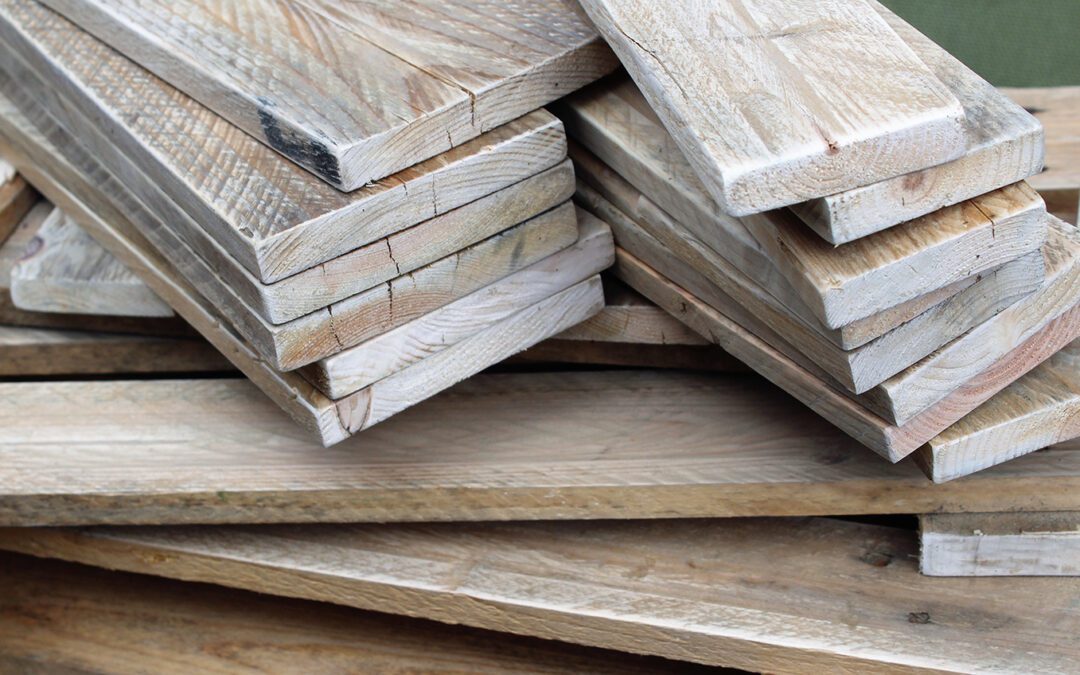Matt Doyle, owner of BC Home Builders, has two primary concerns during renovation projects: Costs for his customers and the impact on the local environment.
“As I continue to build this company, we’re implementing as many strategies as we can to be as green as possible,” he says.
One way to mitigate cost and lessen environmental impacts is by using reclaimed wood.
Reclaiming, or reusing the wood in a torn down structure, reduces waste and can also save customers a lot of money for materials.
Environmental Impact
“Historically, the construction industry has been quite wasteful,” says Matt. “A good portion of landfill use is construction use. We see that on our job sites when bins and bins of material are being removed.”
Material like cabinetry for instance, if in fairly good shape could be reused by somebody else. Businesses like Habitat for Humanity are reselling products Matt and his team pull out, then hand over to them rather than throwing it into the dump.
Costs of Reclaiming Wood
“In older houses, you’ll see fir 2x4s, fir joists, and wood, especially fir, hardens with age,” says Matt. “It isn’t as easy to use as a new 2×4. Wood that’s 60 years on is hard on tools and machines hard to renail, etcetera,” say Matt.
“On the plus side, if you can reuse it, it’s better wood. Usually, it’s tighter grain wood which means it has a good structural capacity. They can hold more tension over a joist and are more durable.”
The Benefits of Reclaiming Wood
There are six excellent reasons to reclaim older wood.
Environmental sustainability: Reclaimed wood is a sustainable resource because it is salvaged from existing structures, rather than being harvested from new growth forests. This helps to conserve natural resources and reduce the environmental impact of logging.
Preservation of history: Reclaimed wood often comes from structures that have historical significance, such as old barns, factories, and warehouses. By salvaging this wood, we preserve a piece of history and the character of the building it came from.
Unique aesthetic: Reclaimed wood often has a unique patina and character that cannot be replicated with new wood. This can add warmth, depth, and interest to a space, giving it a unique and one-of-a-kind look.
Durability: Reclaimed wood is often more durable than new wood because it has already been seasoned and dried by the elements. It also has the advantage of being kiln dried, making it less likely to warp or crack in the future.
Cost-effective: Reclaimed wood can be more cost-effective than new wood because it is often salvaged from local sources, reducing transportation costs. Additionally, the demand for reclaimed wood is often lower than new wood, making it more affordable.
Saving trees: Reclaimed wood is a way to conserve the natural resources and save trees by using the already available materials, thus reducing the demand of cutting new trees, and helping the environment.
Regulations Coming to Victoria
“In some ways, local governments are going to be helping us with going greener,” says Matt.
In June 2022, Victoria Council introduced a new bylaw designed to salvage valuable wood and construction materials from demolition sites. The city is leading the way as one of only three Canadian cities to implement a bylaw like this, and Council expect to avert up to 3,000 tonnes from landfill each year.
“Victoria has one coming up which will stipulate that when doing any major renovations, the materials you demolish and take away from a house, we’ll have to use a percentage of the total weight in the new build.” “Now we’re starting to see stricter regulations coming in which require us to build to last again,” says Matt. “As a company, we make sure we’re building structures to last anyways, so I’m happy to see stricture standards come in.”
If you have questions about how we use reclaimed wood, or you would like to discuss your project, get in touch with us.

